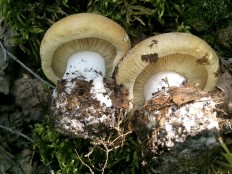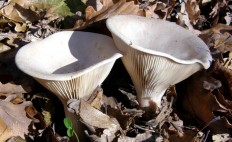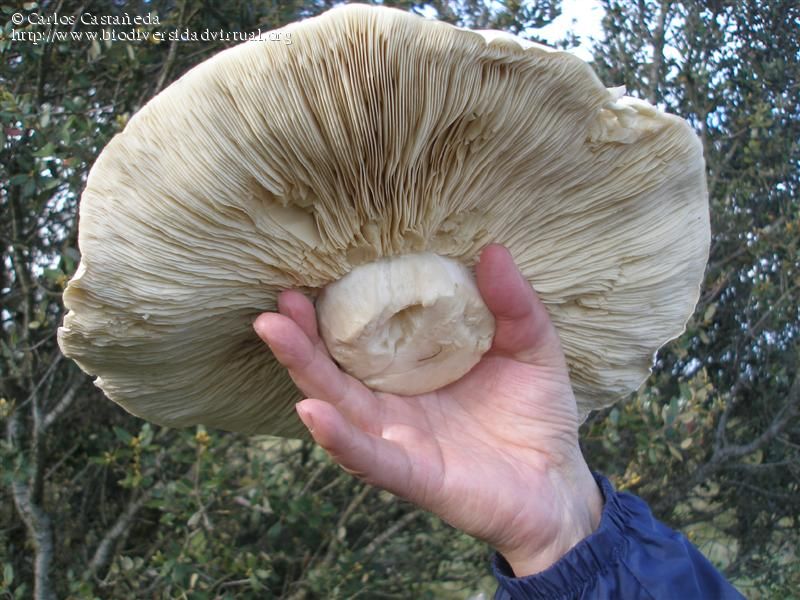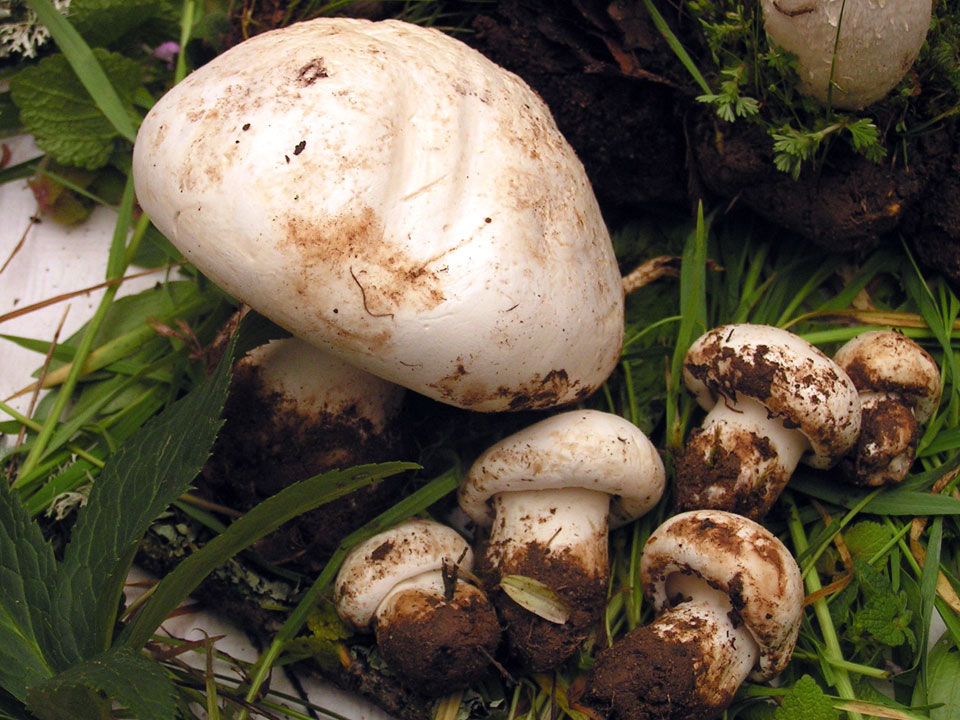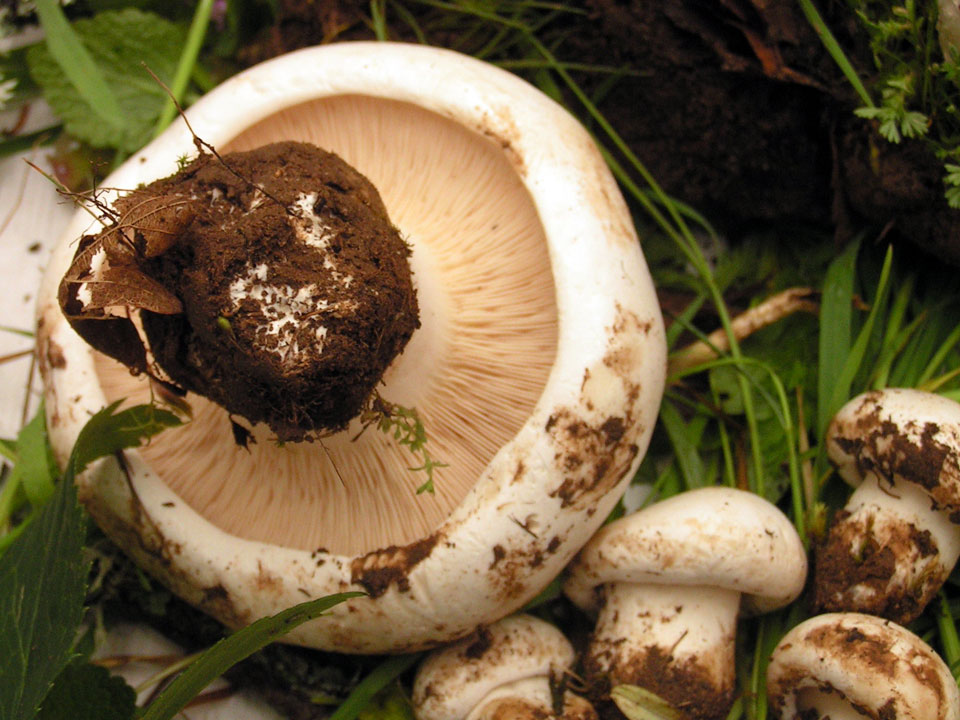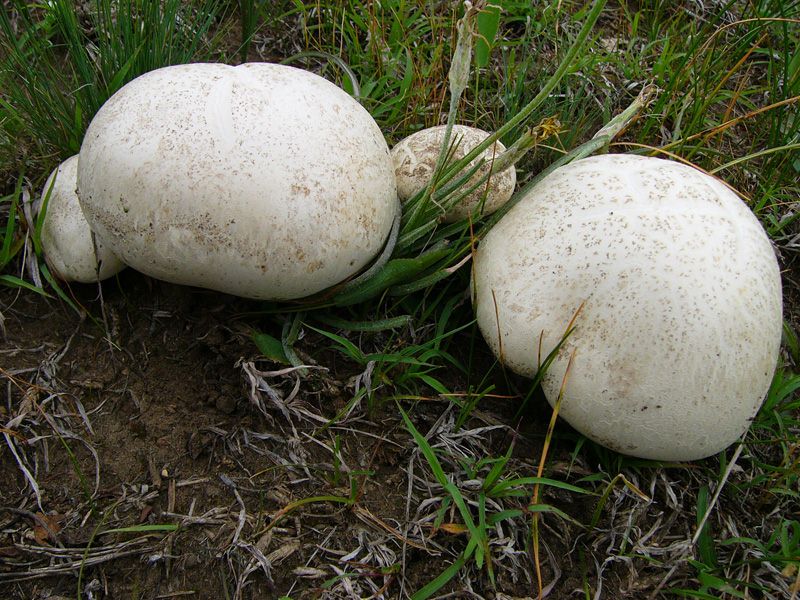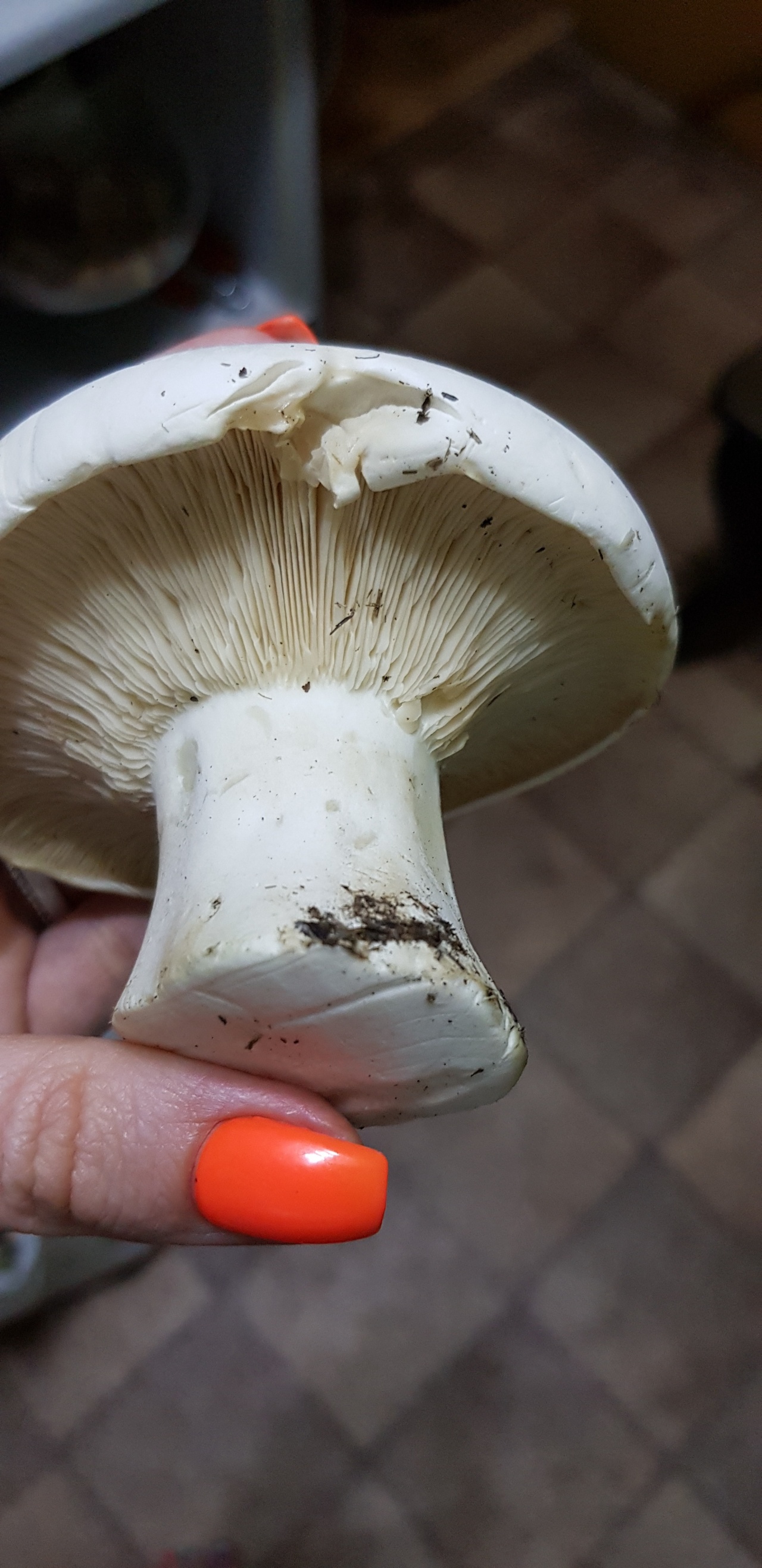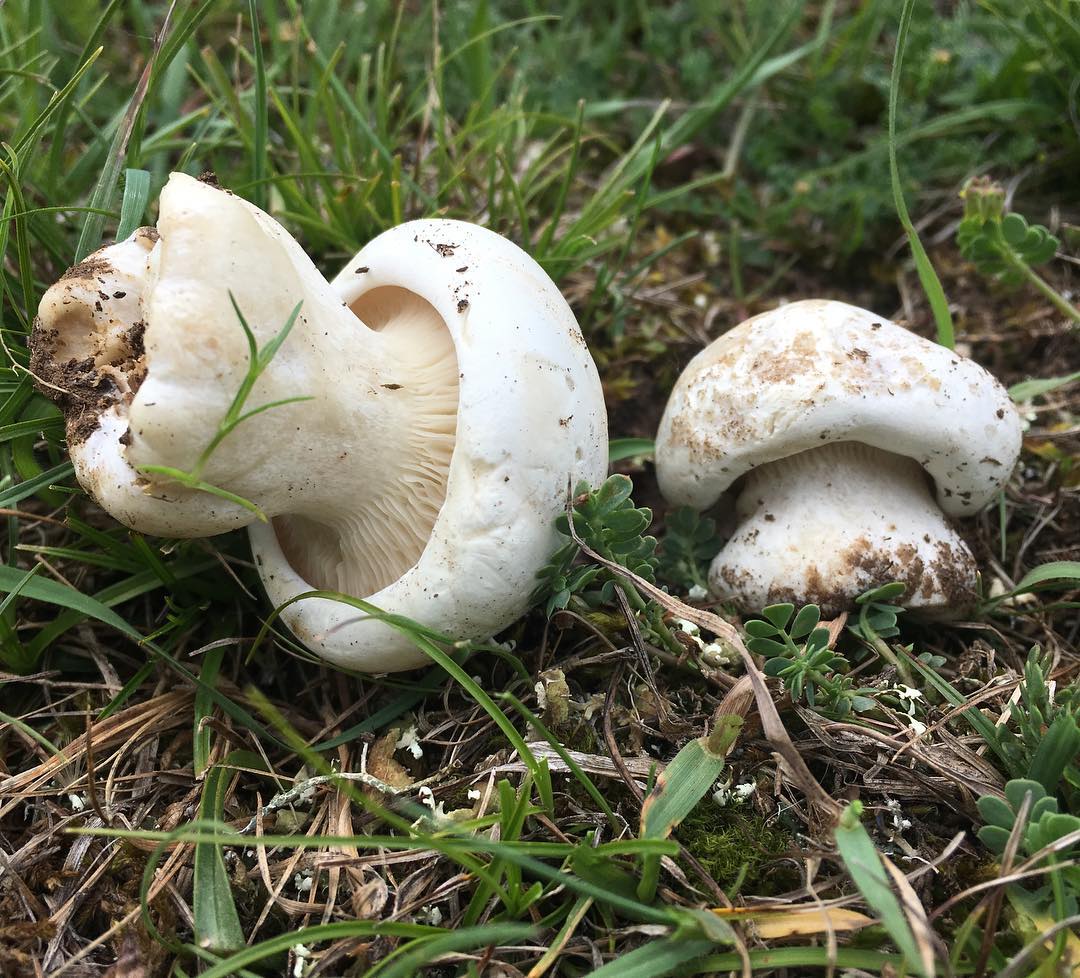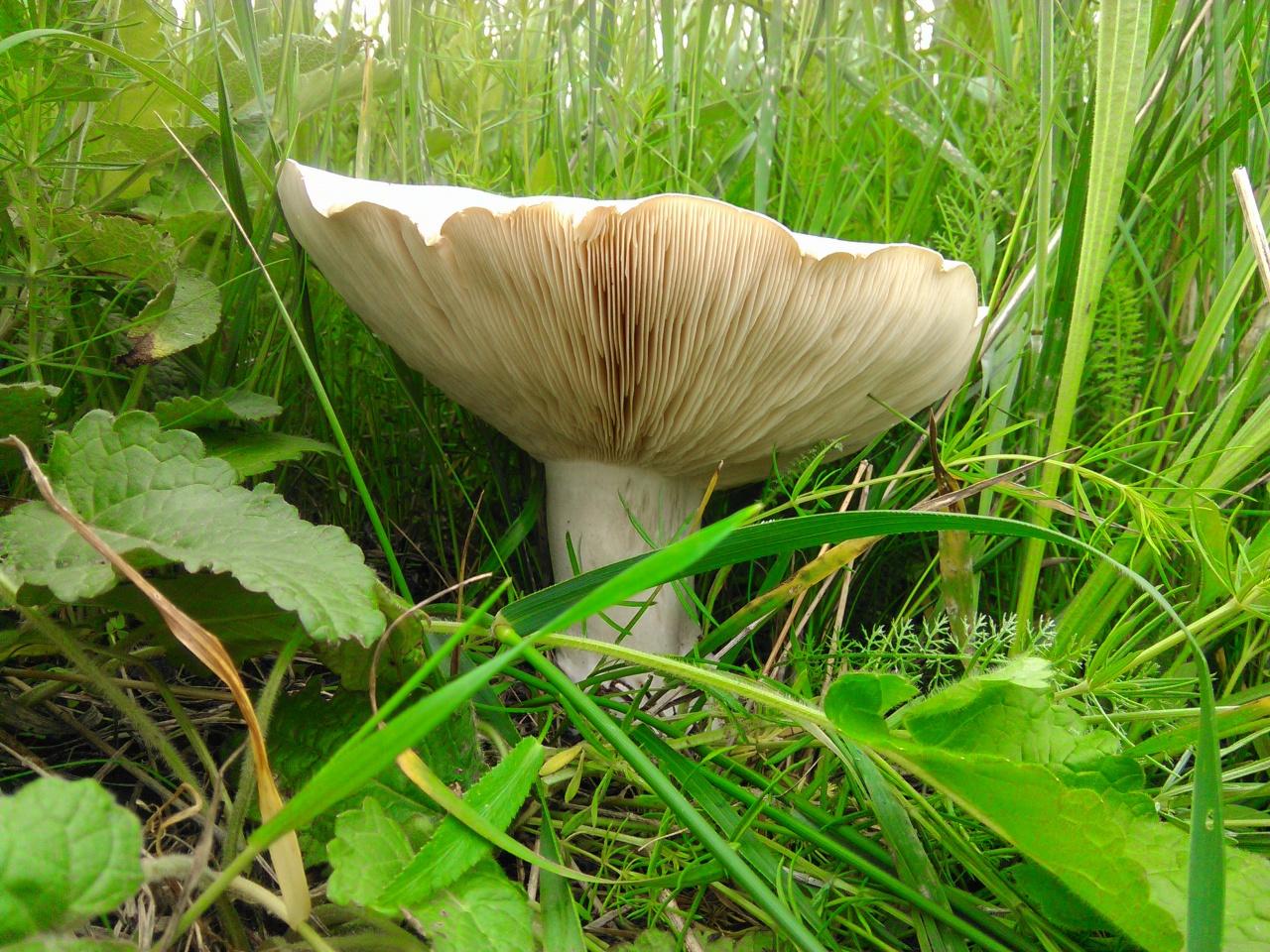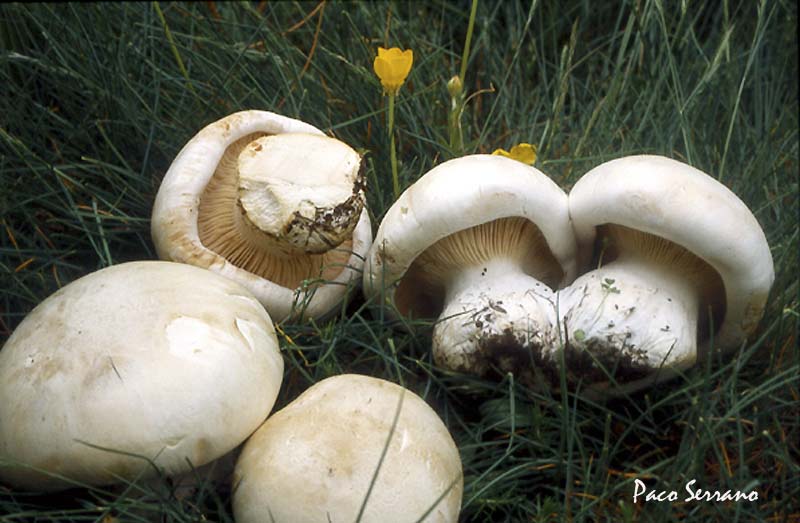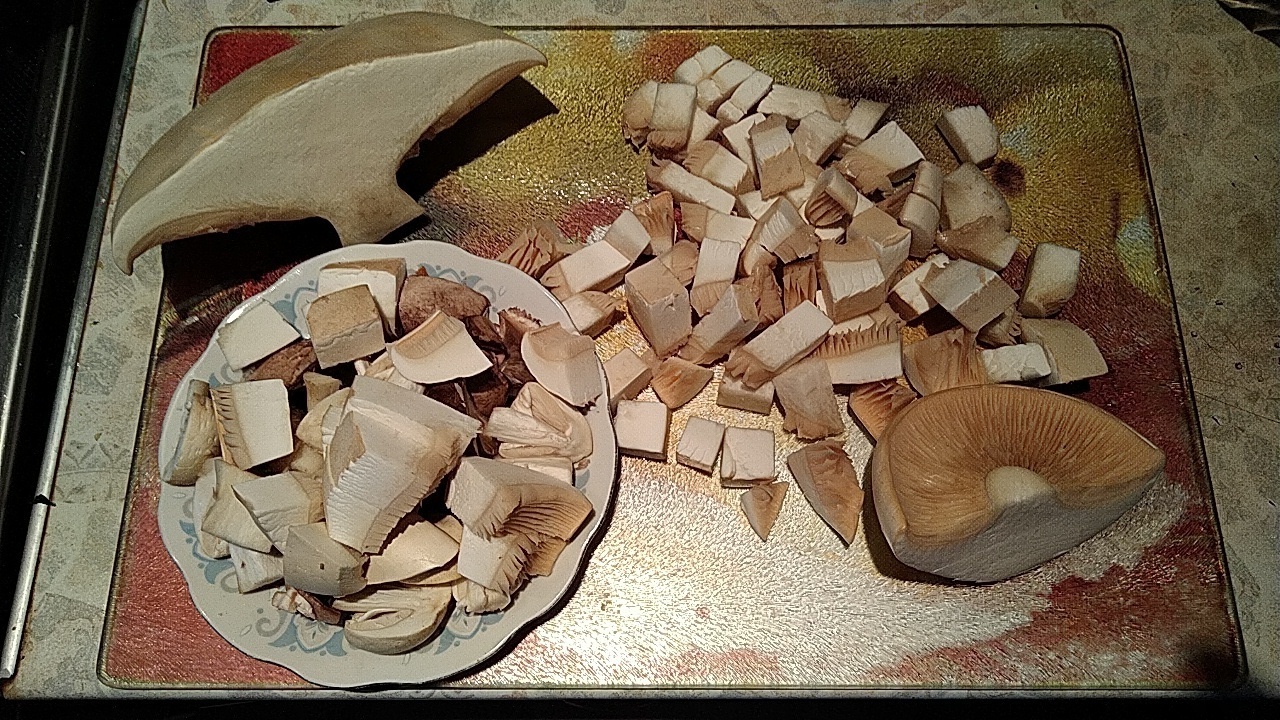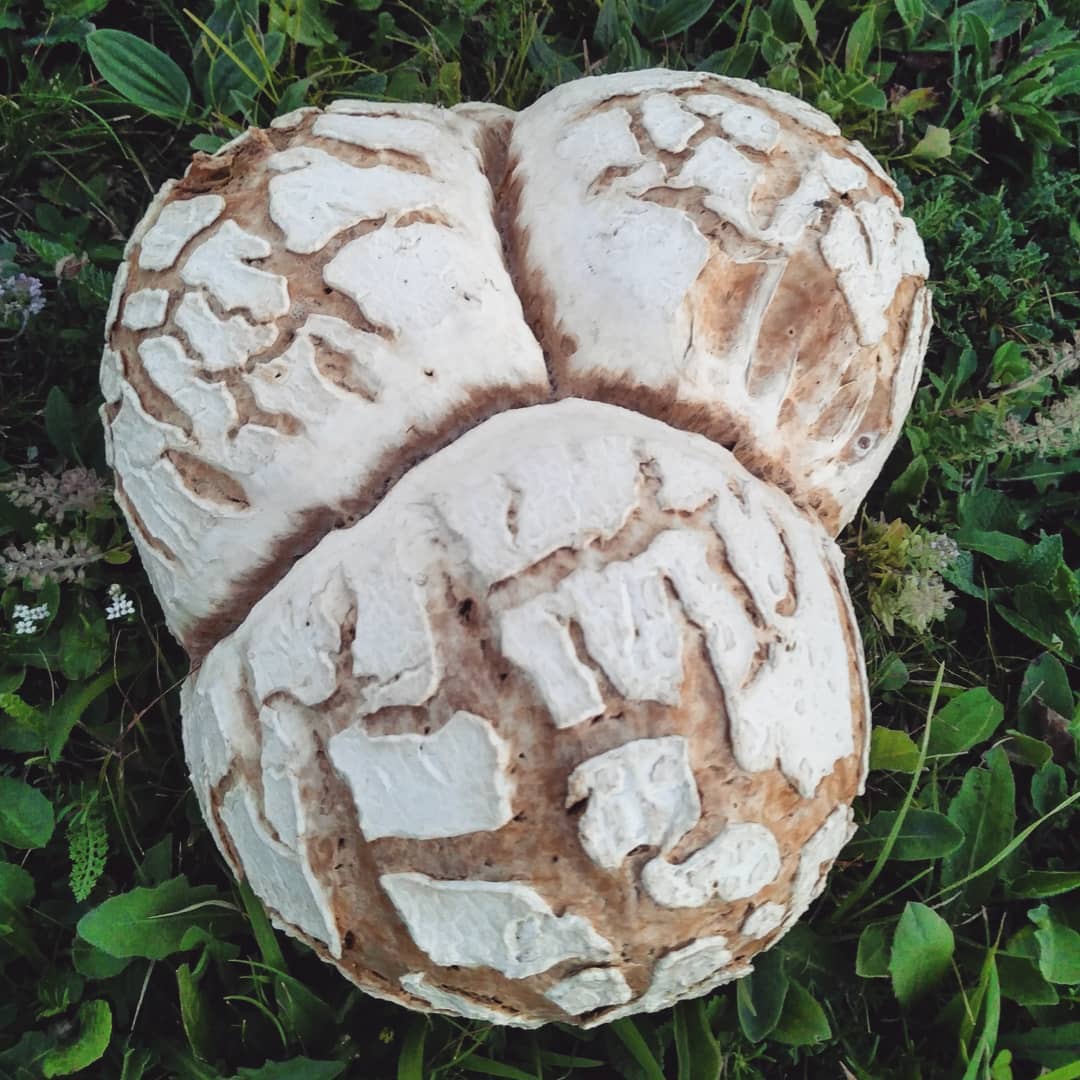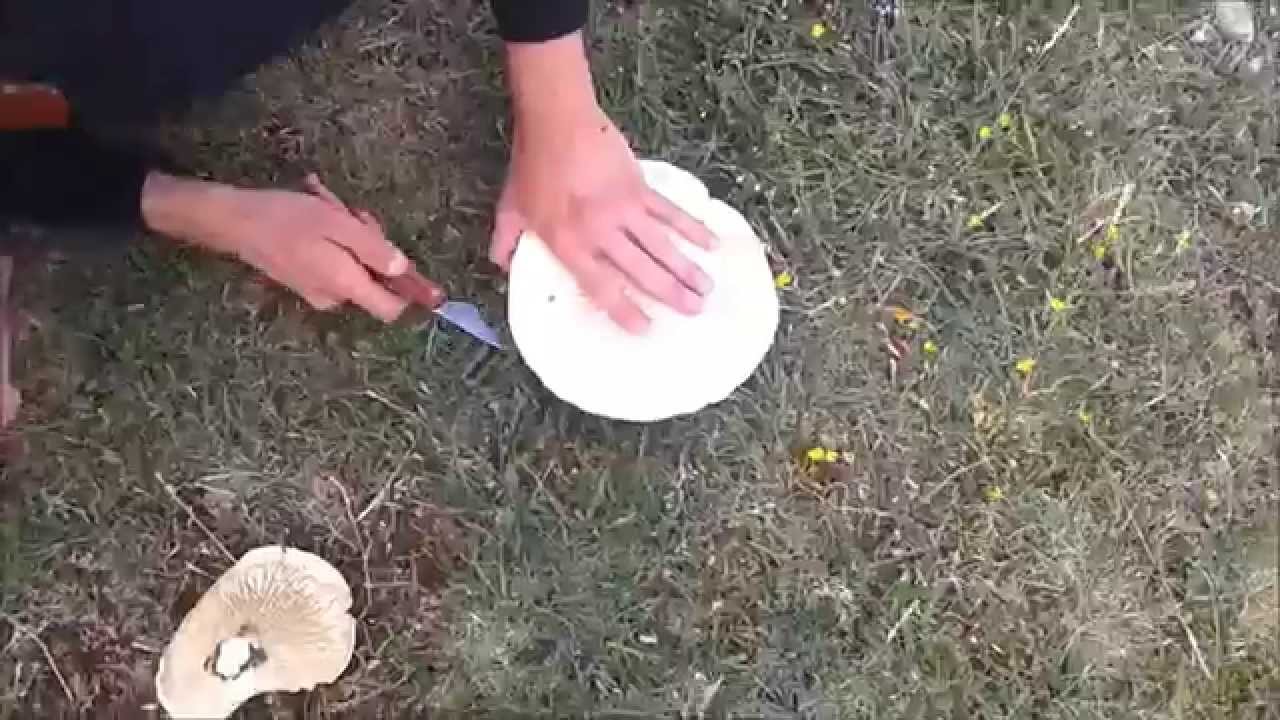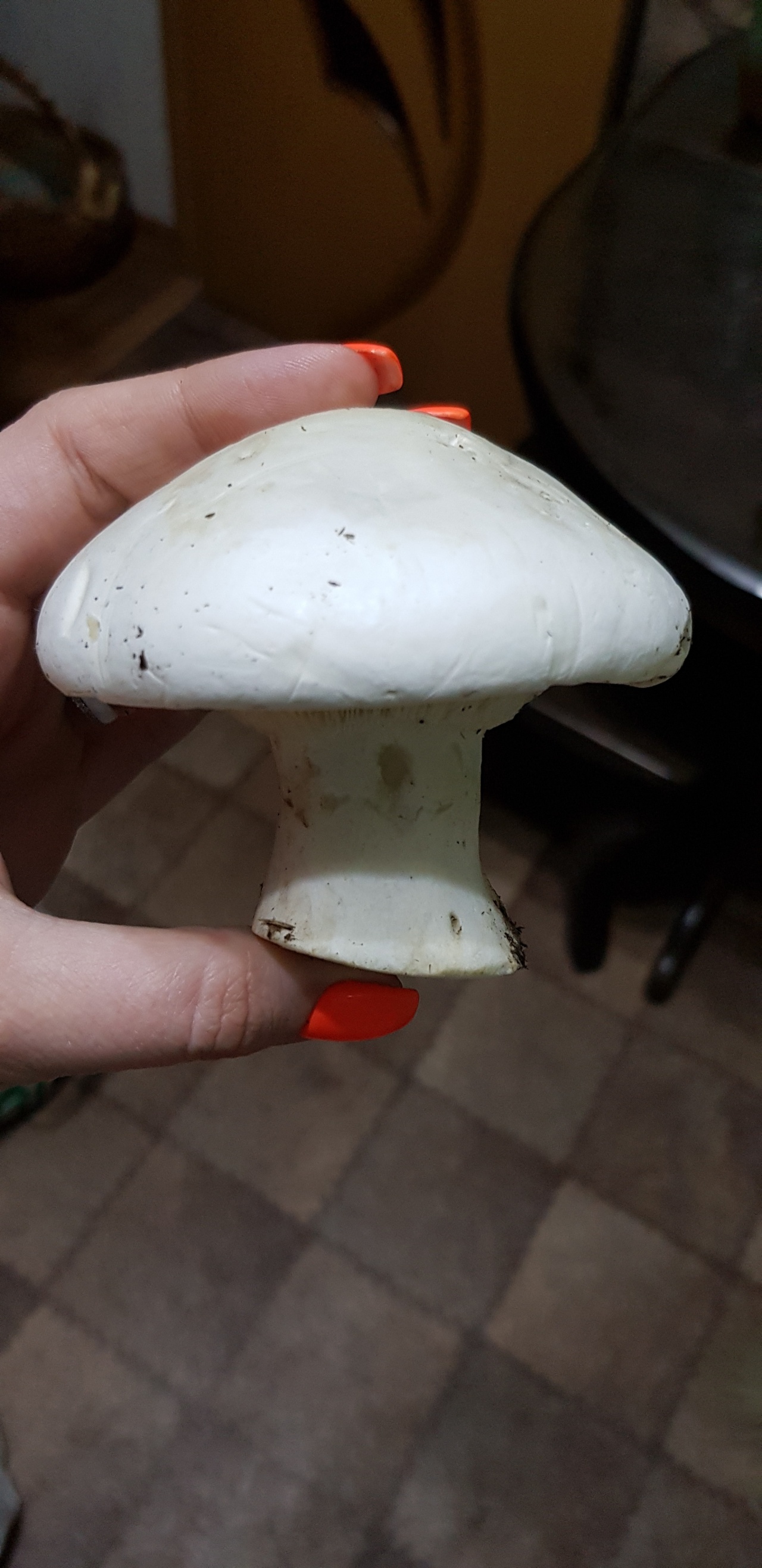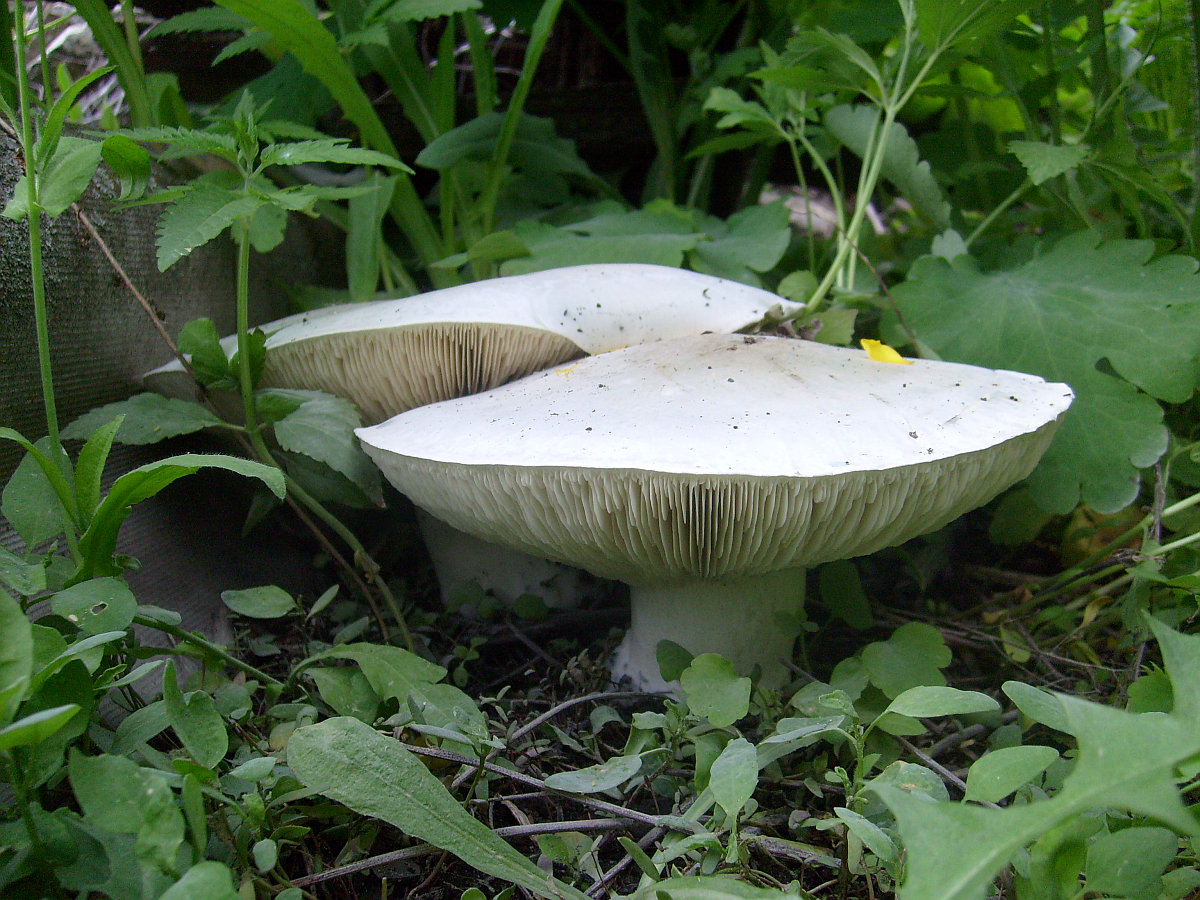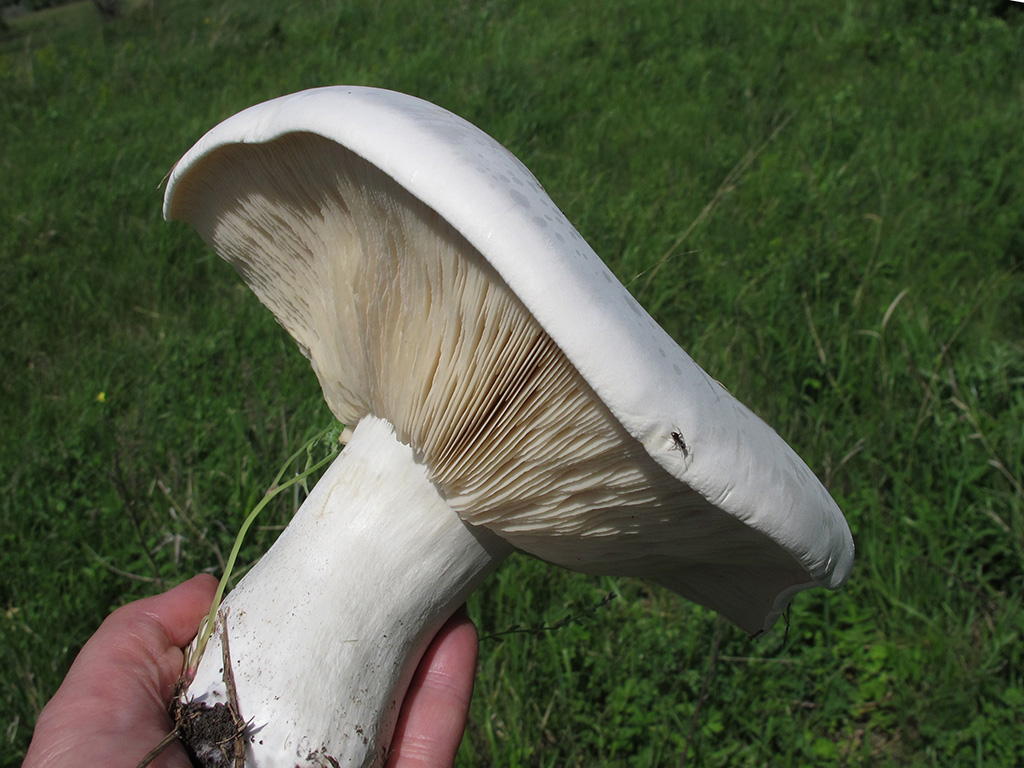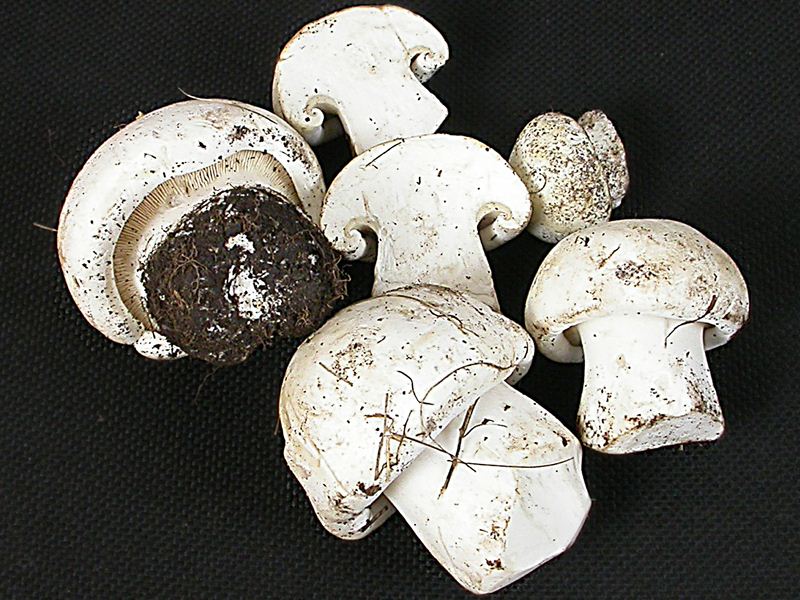Description and places of distribution of steppe oyster mushroom (royal)
It turns out that porcini mushrooms can grow not only in the forest. But we are not talking about that fat man, which we consider the most delicious and nutritious species. The fact is that the steppe oyster mushroom is also called the porcini mushroom, but only the steppe mushroom, and it looks completely different. Where does this beauty grow, can it be eaten?
Description
Steppe oyster mushroom (Pleurotus eryngii), also called "steppe white mushroom", is a lamellar representative of the mushroom kingdom, belonging to the Oyster mushroom family, the Oyster mushroom genus. This edible beauty can also be called eringi, royal oyster mushroom, white steppe or simply steppe mushroom.
- the cap is rather thick, of medium size, from 4 to 8 cm in diameter, but sometimes it can grow up to 13-25 cm.In young royal oyster mushrooms, it is slightly convex, with a tubercle in the central part, but over time it becomes flat or funnel-shaped with an irregularly shaped edge ... The surface is smooth to the touch with a small amount of small scales - most of them are in the central part. Skin color from dark brown to cream shades. As the mushroom matures, the dark cap brightens: first red-brown, then brownish, even later pale ocher. In the middle, as a rule, the color is brighter and more saturated, paler towards the edges;
- the leg is low, up to 5 cm, but thick and dense, up to 2.5 cm wide, expanding downward. It has a cylindrical shape, usually located in the center of the cap. The skin color is whitish, darkens with age;
- the flesh is thick and fleshy, dense, however, in old mushrooms, it often becomes wadded in the stem. The color is white, it can be slightly pinkish or have a brown tint. The taste is pronounced mushroom, but the pulp does not have a special smell;
- plates moderately frequent, but wide, slightly descending along the pedicle. Are pinkish white or cream in color;
- the spores are creamy, in the form of narrow ellipses or small cylinders.
Distribution and fruiting period
Eringi mushrooms (eringi) grow in the wild where it is relatively warm - in southern Russia, North America, Central Asia and Europe. They are found in pastures, in deserts on plant debris, stems, roots of umbrella plant species - these are ferula, erythematosus, gladysh and others.
Steppe oyster mushroom or white steppe mushroom bears fruit only in spring, appearing in the southern regions already in March and April. It is prone to parasitism and often acts as a saprophyte.
Edibility
The white steppe mushroom is considered a very valuable and tasty representative of the mushroom kingdom. It tastes like a real milk mushroom or champignon, but slightly tougher.
You can make delicious homemade preparations from it - it is suitable for pickling, salting, fresh (after minimal heat treatment).
Note that the steppe oyster mushroom is very rich in proteins - it contains about 15-25% of them, and during heat treatment, their number even increases to 70%. Moreover, they are perfectly absorbed by the human body. In terms of the content of other nutrients and nutrients, the composition of the pulp is close to meat and dairy products.
The pulp of the steppe oyster mushroom is also useful for health - it contains acids that lower cholesterol levels and prevent the development of atherosclerosis. It is rich in ascorbic acid, B vitamins, has anti-tumor properties and enhances immunity.
Growing
Since the royal oyster mushroom is rightfully considered one of the most delicious types, it has been cultivated for a long time. And it is much easier to grow it than champignons, since it is unpretentious to growing conditions and has a high yield.
Steppe oyster mushroom is grown on a pasteurized substrate according to the technology of block production. In special bags, the mycelium develops quickly - it takes only 3 weeks.
Optimal growing conditions are air temperature about 18-25 degrees, humidity - about 90%.After the first rudiments of fungi appear, it is reduced to 80%.
In order for oyster mushrooms to bear fruit better, they use a casing layer, which is applied with a layer of 3 cm on a block with already appeared rudiments of mushrooms.
If possible, be sure to try the steppe oyster mushroom - it is a delicious and nutritious mushroom. Fortunately, now there is no need to go far beyond it - you can just buy a package of steppe mushrooms in the store and appreciate their taste.
White pig gentian
Walking in the summer through the forest, you can come across a fabulous sight - a large family of brownish broad-brimmed mushrooms, forming a circle, the so-called witch's ring. It looks very unusual and beautiful, but the edibility of such a crop raises great doubts.
Indeed, the gentian white pig is unlikely to be able to charm eaters with its overly bitter taste. But still there are lovers of these mushrooms among gourmets.
White pig gentian
White pig gentian - lat. Clitocybegentianea
Earlier in mycology, this type of mushroom was called differently - Leucopaxillusamarus, which means Leukopaxillus bitter or Leukopaxillus gentian.
In the people, you can most often find another, simpler name for this mushroom - the bitter white pig. And it is this that fully justifies its name, because this plant really belongs to the genus Belosvinukha, its taste corresponds to the description.
Mushroom cap
Young bitter white pigs have neat strong caps 3-4 cm with an inward curved edge. Their color is rich brown with different shades from grayish-nutty to brown with reddish.
As they get older, the tip of the mushrooms changes. The hat straightens, becomes open, flatter, and bends slightly downward in old age. On average, its size is 12-15 cm, but sometimes individual mushrooms can grow up to 20 cm in diameter. The color of mature individuals also changes. The pigment seems to fade from the edge. Later, whitish stripes may diverge from the center of the cap.
The surface of the cap is dry, smooth, and its flesh is fleshy. Below there is a lamellar hymenophore, white in young plants, and slightly darkening with age, acquiring a cream color. The plates themselves are adherent, slightly descending along the stem and have different lengths.
Stipe
That in young animals, that in adult mushrooms, the leg is white, straight and dense. Only by adulthood does it become thickened at the bottom and resembles the shape of a club.
The diameter of the leg is on average 1-2 cm, and the height reaches 8 cm. In the context, the flesh does not change color and has a mealy odor.
Place of growth
The bitter white pig has chosen conifers as a favorite place. You can also meet it in mixed forests, but only in those parts where spruce and pine trees predominate.
Mushrooms usually grow in large groups in open places on the ground, where there is a solid coniferous litter. Often, a family of white pigs grows in a circle, forming the so-called witch or elf rings. Occasionally you can meet lonely white pigs. They tend to grow under fir trees.
Their habitat stretched across the northern, eastern and middle parts of Europe, the European part of Russia, the Caucasus and North America. These mushrooms are also found in Kazakhstan, mainly in the Almaty region, in the places where the Tien Shan spruce grows.
From the end of June, you can already see the first bitter white pigs. They grow all the rest of summer and the beginning of autumn, until the end of September.
Edibility
The gentian white pig is classified as an inedible mushroom solely due to its taste. It is overly bitter. However, these mushrooms are not poisonous. And in some regions they are even used in preparations for the winter.
To get rid of the bitterness, the mushrooms are soaked for three days, changing the water 3-4 times a day.Then it is boiled and salted with aromatic herbs: dill, horseradish leaves, currant leaves.
Similar species
In appearance, the white pig is often confused with ryadovki. For example, crowded or scaly rows are very similar to gentian leukopaxillus. In addition, they also grow in conifers and can create "witch rings". However, the ryadovki, unlike the white pigs, have a pleasant mushroom taste, do not taste bitter at all and are readily used in cooking.
Poisonous and inedible species of white steppe mushroom
Lilac-footed ryadovka and leucopaxillus lepistoid, edible mushrooms that grow with it at the same time, are often mistaken for the white steppe mushroom. Poisonous and inedible mushrooms similar to it have not been described.
Row lilac-legged or lilac-legged or blue-legged (Lepista personata)

The diameter of the cap is 5-12.5 cm, the shape is flat-convex, the color is whitish with a purple tint. The edge is slightly tomentose, tucked up, fleshy. The pulp is grayish-purple in color, fleshy. The stalk is dense, widened at the base, 4.5-9.5 cm in height and 1.8-2.5 cm in diameter, light purple or bluish in color.
The fungus grows in deciduous forests, shrubs, meadows and pastures in Russia, Central Asia, Europe, Japan, China, Australia, North and South America. The season begins at the end of March and lasts until the beginning of summer, repeated in October-November.
The species is an edible mushroom that tastes good, dried and pickled.
Live
- Publications
- ads
-
mestnie →
Four self-nominated candidates have already been removed from the elections to the Sochi City Assembly
2 in Elections in Sochi -
kva-kva →
Demushkin.
10 in Blog them. kva-kva -
vera1956 →
The governor instructed the head of Sochi to check the legality of construction in the Bytkhi forest
9 in the City: problems and solutions -
Sochinets1963 →
Some do, others break.
1 in Sochi-style Delirium -
vera1956 →
Health paths in the Bytkha microdistrict
in Sights of Sochi -
Treugolnik →
Gift tickets to your friends!
19 in Musical Sochi -
hinds →
July 30 // Free English Workshop G8 English Club // Music Festivals of America
in Blog to them. hinds -
Made-in-Sochi →
About the artist Zhilinsky
in Blog to them. Made-in-Sochi -
Tarlich →
Not only the most famous
13 in Automotive Sochi -
nikonor →
The judicial system as a body for the weaning of municipal land funds
14 in Judicial Sochi -
Prov →
Parking in the middle of the square
17 in Autohams -
hinds →
2.08 // An exciting hike to the Shakhe river valley with an English-speaking guide // G8 English Club
1 in Blog them. hinds -
makaron479 →
Adler's spontaneous market, early fair - name alone
29 in Blog them. makaron479 -
kia1975 →
Kubanenergo protects us. Power outage on the street. Pasechnaya, 61
14 in No LIGHT ??? Hmm .. we don't know ... -
AP_salem →
And nothing has changed!
33 in Automotive Sochi -
vsnarodnyn1 →
Dixieland "Hosta - band" in the cultural project "Music of Sunset". Concert from 24.07.20. Video.
19 in Culture of Sochi -
helix →
The Wandering Lecture Hall: The Forever Young Vanguard
2 in Architecture of Sochi -
Tarlich →
So what! I live here
18 in Sochi Delirium -
sosedka →
electricity readings
8 in Blog them. sosedka -
D-huan →
Ecology and Ecology South
3 in housing and communal services -
bessochi →
Dzykhrinsky Adventures.
2 in Our hikes -
Shotarustavelisochi →
GEORGIAN COMMUNITY NAMED AFTER SHOT RUSTAVELI CONGRATULATES OUR CHIEF CHOREOGRAPHER OF GEORGIAN DANCES - DMITRY SAKHELASHVILI HAPPY BIRTHDAY! Chairman - Vladimir G. Gegechkori
in Blog to them. Shotarustavelisochi
-
maiklnait →
in Services
-
polina88 →
to the Animal world
-
patriot751 →
to the Animal world
-
Anita1995 →
to the Animal world
-
kerosin444 →
in Real Estate
-
clara →
in Real Estate
-
novinka27 →
to the Animal world
-
lvirgo →
to the Animal world
-
Sofir23 →
to the Animal world
-
popova226 →
in Real Estate
-
Pete →
in Auto-Velo-Moto
-
SnackSochi →
in Real Estate
-
Lilius →
to the Animal world
-
romanencko →
in Work
-
Js1 →
in Services
-
feld →
in Real Estate
-
softsochi →
in Services
-
Terpsihora80 →
c For children
-
okeanchik →
c For children
-
chepr →
in Real Estate
-
dinara-s →
to the Animal world
-
moemholod →
in Work
Rss
Similar species
Young false pigs are incredibly similar to champignons. They are the same white with a domed rounded fleshy cap. They can be distinguished by their size, the mushrooms are still inferior in this aspect, as well as by the hymenophore - in mushrooms it is pinkish.
Adult pseudo-pigs become like giant talkers - mushrooms of the 4th food category, that is, conditionally edible. Talkers are also very large and their habitat is similar to wen. However, it is still possible to distinguish the "doubles". Talkers have a pronounced funnel-shaped cap of a cream shade. And the aromatic parameters of this mushroom are seriously inferior to wen.
The gentian white pig has a brown color, however, with age it becomes discolored and becomes similar to its "relative" - the row-shaped false pig. The main difference between these mushrooms is taste. The flesh of the gentian white pig is very bitter, for which this mushroom does not belong to the edible group.

